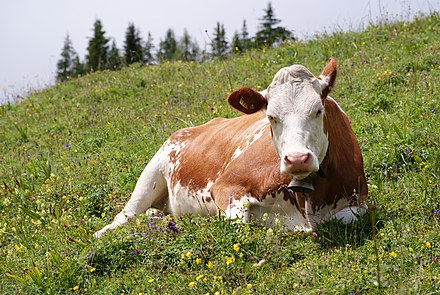Cattle are one of the earliest mammals domesticated by humans and are mainly used for meat, dairy products, and as farming and transportation animals in agriculture. The following is detailed information about cattle and an overview of their living habits:

Body: A cow's body is usually strong and muscular, with four strong legs and thick horny hooves.
Types: Common cattle include dairy cattle, beef cattle, farm cattle, etc. They have different characteristics in terms of use and body shape.
Distribution: Domestic cattle are raised worldwide and play an important role in the expanding agriculture and livestock industries.
Ecological environment: Cows generally live on land, and their ecological environment is usually pastures, cattle sheds, farmland and other agricultural and livestock places. Wild cattle species such as bison or bison inhabit savannah and forest areas.
Food habits: Cows are herbivores and mainly feed on herbs, grass, hay, etc. Dairy cows will require additional high-energy feed to maintain milk production during production.
Digestive characteristics: Cows are ruminants and have multiple stomachs, which can effectively digest cellulose and use plant fiber as an energy source.
Sociality: In cattle herds, domestic cattle usually form a clear social hierarchical structure with group leaders and so on.
Communication: Cows communicate with each other through gestures, noises (such as moos), and touch to express emotions and intentions.
Domestication: Cattle are one of the earliest animals domesticated by humans. They are used in agriculture, providing meat, dairy products, etc., and also play an important role in traditional celebrations and celebrations.
Economic value: The production of cattle meat and dairy products provides an important source of food for humans, and its leather is also used to make various products.
Cultural significance: Cows have symbolic and spiritual significance in many cultures, and cattle elements often appear in literature, religion, and folklore.
Raising cattle requires understanding their behavioral characteristics, providing good feed and drinking water conditions, and ensuring reasonable housing and exercise conditions.
In general, cattle are important livestock animals that have a profound impact on human production and life, cultural customs, and dietary traditions. Through long-term domestication and exchange with humans, cattle occupy a special position in human history and culture.
animal tags:
We created this article in conjunction with AI technology, then made sure it was fact-checked and edited by a Animals Top editor.